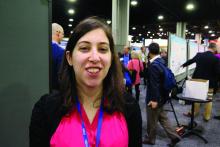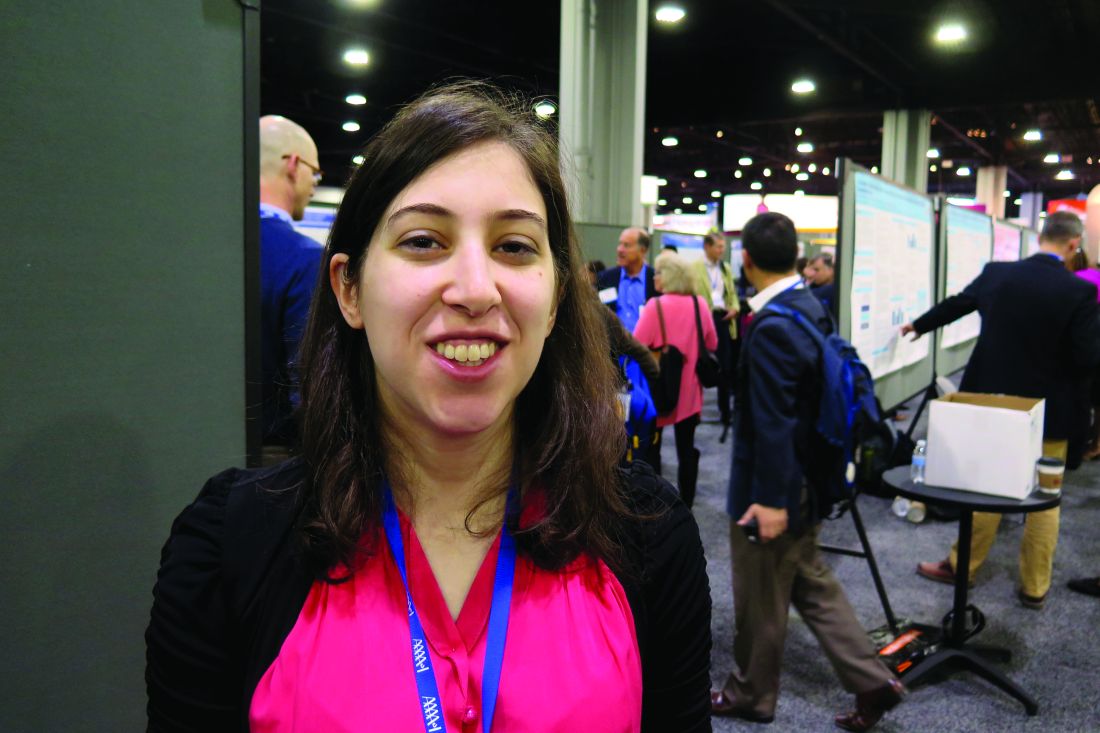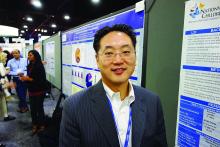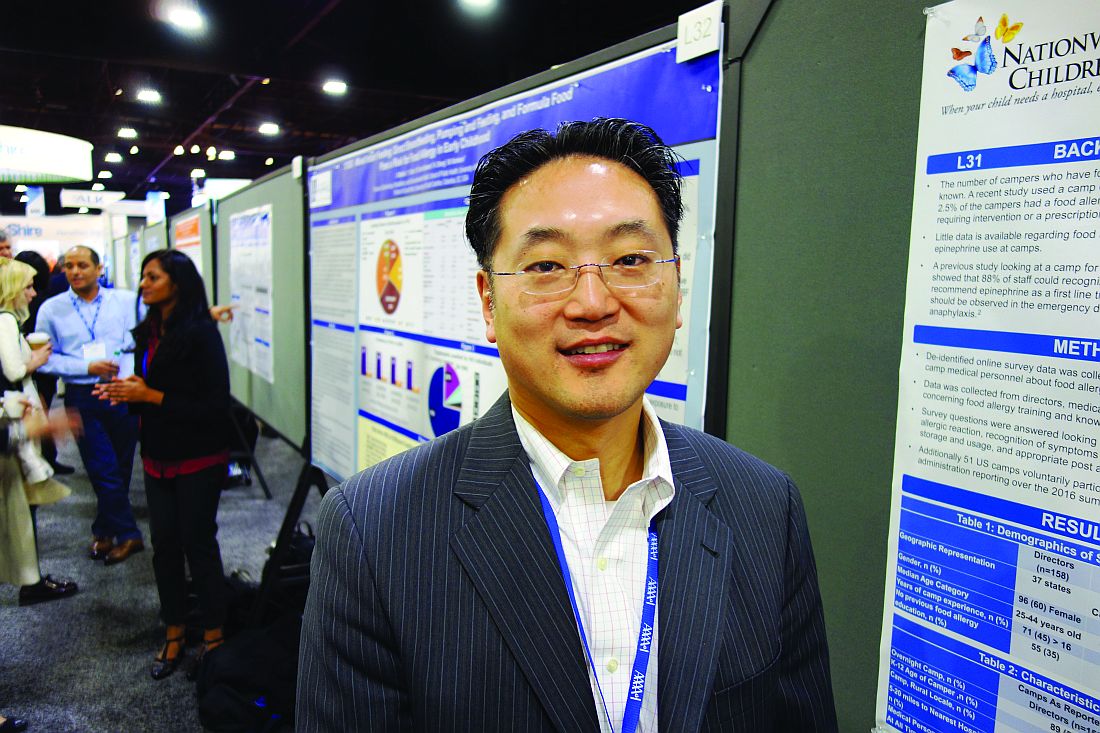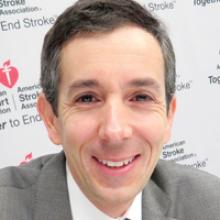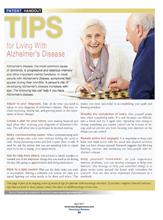User login
Consider apps for better patient health
Hospitalists should not overlook apps as tools for better health: Smartphone ownership is rising among all demographic groups, and more than 165,000 health apps exist in app stores. Many apps are aimed at helping caregivers and patients with complex medical conditions.
“Patient-facing mobile health applications (mHealth apps) – those intended for use by patients to manage their health – have the potential to help high-need, high-cost populations manage their health, but a variety of questions related to their utility and function have not previously been explored,” Karandeep Singh, MD, MMSc, said in “Many Mobile Health Apps Target High-Need, High-Cost Populations, But Gaps Remain.”1
- How well do apps serve the needs of patients with varying levels of engagement with their health?
- Can we infer an app’s clinical utility or usability based on its app store rating?
- Do apps appropriately respond to information entered by the user indicating that he or she might be in danger?
- How well do apps protect the privacy and security of user-entered health data?
- Are app costs a barrier to patients’ purchasing and using them?
- The study team found a variety of apps for patients with chronic conditions.
“While many apps allow users to track health information, most apps did not respond appropriately when a user entered potentially dangerous health information,” Dr. Singh says. “Consumers’ ratings of apps on the iOS and Android app stores were poor indications of the apps’ clinical utility or usability. Finally, we found that many apps enable sharing of information with others but primarily through insecure means. This is especially problematic because just under two-thirds of apps we evaluated had a privacy policy.”
He cautions hospitalists that app ratings may have little bearing on its clinical utility as judged by a physician.
“Additionally, for patients tracking health findings using apps during an inpatient stay, the most secure way of sharing this information is the old-fashioned way, in person or in print,” he explains. “Unlike hospital-based health information systems, health data stored in apps is generally not regulated by HIPAA. Hospitalists should not assume that a ‘secure messaging’ system provided by a patient-facing app is actually secure.”
The American Medical Association, American Heart Association, Healthcare Information and Management Systems Society, and digital health nonprofit DHX Group are the founders of the new guideline-writing organization called Xcertia. Xcertia will provide guidance for developing, evaluating, or recommending mHealth apps.
“I hope that hospitalists keenly interested in apps will take an active role in Xcertia, to ensure that their voices are heard in what looks to be an unprecedented large-scale effort in the United States,” Dr. Singh says. “While a medication list printed on a discharge summary cannot remind patients to take their meds, apps can do this quite well.”
Reference
1. Singh, K, Drouin, K, Newmark, L, et al. Many mobile health apps target high-need, high-cost populations, but gaps remain. Health Affairs. 2016;35(12):2310-8.
Hospitalists should not overlook apps as tools for better health: Smartphone ownership is rising among all demographic groups, and more than 165,000 health apps exist in app stores. Many apps are aimed at helping caregivers and patients with complex medical conditions.
“Patient-facing mobile health applications (mHealth apps) – those intended for use by patients to manage their health – have the potential to help high-need, high-cost populations manage their health, but a variety of questions related to their utility and function have not previously been explored,” Karandeep Singh, MD, MMSc, said in “Many Mobile Health Apps Target High-Need, High-Cost Populations, But Gaps Remain.”1
- How well do apps serve the needs of patients with varying levels of engagement with their health?
- Can we infer an app’s clinical utility or usability based on its app store rating?
- Do apps appropriately respond to information entered by the user indicating that he or she might be in danger?
- How well do apps protect the privacy and security of user-entered health data?
- Are app costs a barrier to patients’ purchasing and using them?
- The study team found a variety of apps for patients with chronic conditions.
“While many apps allow users to track health information, most apps did not respond appropriately when a user entered potentially dangerous health information,” Dr. Singh says. “Consumers’ ratings of apps on the iOS and Android app stores were poor indications of the apps’ clinical utility or usability. Finally, we found that many apps enable sharing of information with others but primarily through insecure means. This is especially problematic because just under two-thirds of apps we evaluated had a privacy policy.”
He cautions hospitalists that app ratings may have little bearing on its clinical utility as judged by a physician.
“Additionally, for patients tracking health findings using apps during an inpatient stay, the most secure way of sharing this information is the old-fashioned way, in person or in print,” he explains. “Unlike hospital-based health information systems, health data stored in apps is generally not regulated by HIPAA. Hospitalists should not assume that a ‘secure messaging’ system provided by a patient-facing app is actually secure.”
The American Medical Association, American Heart Association, Healthcare Information and Management Systems Society, and digital health nonprofit DHX Group are the founders of the new guideline-writing organization called Xcertia. Xcertia will provide guidance for developing, evaluating, or recommending mHealth apps.
“I hope that hospitalists keenly interested in apps will take an active role in Xcertia, to ensure that their voices are heard in what looks to be an unprecedented large-scale effort in the United States,” Dr. Singh says. “While a medication list printed on a discharge summary cannot remind patients to take their meds, apps can do this quite well.”
Reference
1. Singh, K, Drouin, K, Newmark, L, et al. Many mobile health apps target high-need, high-cost populations, but gaps remain. Health Affairs. 2016;35(12):2310-8.
Hospitalists should not overlook apps as tools for better health: Smartphone ownership is rising among all demographic groups, and more than 165,000 health apps exist in app stores. Many apps are aimed at helping caregivers and patients with complex medical conditions.
“Patient-facing mobile health applications (mHealth apps) – those intended for use by patients to manage their health – have the potential to help high-need, high-cost populations manage their health, but a variety of questions related to their utility and function have not previously been explored,” Karandeep Singh, MD, MMSc, said in “Many Mobile Health Apps Target High-Need, High-Cost Populations, But Gaps Remain.”1
- How well do apps serve the needs of patients with varying levels of engagement with their health?
- Can we infer an app’s clinical utility or usability based on its app store rating?
- Do apps appropriately respond to information entered by the user indicating that he or she might be in danger?
- How well do apps protect the privacy and security of user-entered health data?
- Are app costs a barrier to patients’ purchasing and using them?
- The study team found a variety of apps for patients with chronic conditions.
“While many apps allow users to track health information, most apps did not respond appropriately when a user entered potentially dangerous health information,” Dr. Singh says. “Consumers’ ratings of apps on the iOS and Android app stores were poor indications of the apps’ clinical utility or usability. Finally, we found that many apps enable sharing of information with others but primarily through insecure means. This is especially problematic because just under two-thirds of apps we evaluated had a privacy policy.”
He cautions hospitalists that app ratings may have little bearing on its clinical utility as judged by a physician.
“Additionally, for patients tracking health findings using apps during an inpatient stay, the most secure way of sharing this information is the old-fashioned way, in person or in print,” he explains. “Unlike hospital-based health information systems, health data stored in apps is generally not regulated by HIPAA. Hospitalists should not assume that a ‘secure messaging’ system provided by a patient-facing app is actually secure.”
The American Medical Association, American Heart Association, Healthcare Information and Management Systems Society, and digital health nonprofit DHX Group are the founders of the new guideline-writing organization called Xcertia. Xcertia will provide guidance for developing, evaluating, or recommending mHealth apps.
“I hope that hospitalists keenly interested in apps will take an active role in Xcertia, to ensure that their voices are heard in what looks to be an unprecedented large-scale effort in the United States,” Dr. Singh says. “While a medication list printed on a discharge summary cannot remind patients to take their meds, apps can do this quite well.”
Reference
1. Singh, K, Drouin, K, Newmark, L, et al. Many mobile health apps target high-need, high-cost populations, but gaps remain. Health Affairs. 2016;35(12):2310-8.
USPSTF: No recommendation on screening for celiac disease
The current evidence is insufficient for the U.S. Preventive Services Task Force to recommend either for or against routine screening of asymptomatic people for celiac disease, according to a Recommendation Statement published online March 28 in JAMA.
The USPSTF is tasked with making recommendations regarding the effectiveness of specific preventive health care services for patients who have no related signs or symptoms. In this case, the group commissioned a systematic review of the literature on celiac disease from 1946 through June 2016, which became the basis for the evidence report informing their Recommendation Statement, said Kirsten Bibbins-Domingo, PhD, MD, chair of the USPSTF and lead author of the statement, and her associates.
However, only 4 studies out of the 3,036 that were examined addressed the question of screening adequately, and they offered few data of use. According to Roger Chou, MD, lead author of the Evidence Report, and his associates, no trials assessed the screening of asymptomatic children, adolescents, or adults for celiac disease with regard to morbidity, mortality, or quality of life. The evidence also was inadequate concerning targeted screening of at-risk individuals, and there were no studies of the effectiveness of treatment after screen-detected celiac disease was found.
There was some evidence supporting the diagnostic accuracy of the tissue transglutaminase-IgA test to detect celiac disease, but “little or no evidence ... to inform most of the key questions related to benefits and harms of screening for celiac disease in asymptomatic individuals,” said Dr. Chou, of the Pacific Northwest Evidence-Based Practice Center and Oregon Health & Science University, both in Portland, and his associates (JAMA. 2017 Mar 28. doi: 10.1001/jama.2016.10395).
Dr. Bibbins-Domingo noted that the American Academy of Family Physicians also has concluded that the evidence is insufficient to assess the balance of screening’s benefits and harms. In contrast, the American College of Gastroenterology recommends that screening be considered in asymptomatic people who have a first-degree relative with a confirmed diagnosis of celiac disease (JAMA. 2017 Mar 28. doi: 10.1001/jama.2017.1462).
In addition, the North American Society for Pediatric Gastroenterology, Hepatology, and Nutrition recommends screening at age 3 years for asymptomatic children who have conditions associated with celiac disease, including type 1 diabetes, autoimmune thyroiditis, Down syndrome, Turner syndrome, William’s syndrome, or selective IgA deficiency, said Dr. Bobbins-Domingo, who is also professor of medicine at the University of California, San Francisco.
Copies of the Recommendation Statement, the Evidence Report, the authors’ disclosures, and other materials are available at www.uspreventiveservicestaskforce.org.
Even though the current evidence on the effectiveness of screening for celiac disease is scarce or absent, it remains reasonable for clinicians to have a low threshold for testing patients, especially in high-risk populations such as those with an affected family member or a related autoimmune disorder.
This is because most celiac disease is unrecognized, and patients can present with diverse symptoms rather than the classic triad of abdominal pain, diarrhea, and weight loss.
Rok Seon Choung, MD, and Joseph A. Murray, MD , are in the division of gastroenterology and hepatology at Mayo Clinic, Rochester, Minn. Dr. Murray reported ties to Alvine Pharmaceuticals, Alba Therapeutics, Celimmune, BioLineRx, and numerous others. Dr. Choung and Dr. Murray made these remarks in an editorial accompanying the USPSTF reports (JAMA. 2017 Mar 28;317:1221-3).
Even though the current evidence on the effectiveness of screening for celiac disease is scarce or absent, it remains reasonable for clinicians to have a low threshold for testing patients, especially in high-risk populations such as those with an affected family member or a related autoimmune disorder.
This is because most celiac disease is unrecognized, and patients can present with diverse symptoms rather than the classic triad of abdominal pain, diarrhea, and weight loss.
Rok Seon Choung, MD, and Joseph A. Murray, MD , are in the division of gastroenterology and hepatology at Mayo Clinic, Rochester, Minn. Dr. Murray reported ties to Alvine Pharmaceuticals, Alba Therapeutics, Celimmune, BioLineRx, and numerous others. Dr. Choung and Dr. Murray made these remarks in an editorial accompanying the USPSTF reports (JAMA. 2017 Mar 28;317:1221-3).
Even though the current evidence on the effectiveness of screening for celiac disease is scarce or absent, it remains reasonable for clinicians to have a low threshold for testing patients, especially in high-risk populations such as those with an affected family member or a related autoimmune disorder.
This is because most celiac disease is unrecognized, and patients can present with diverse symptoms rather than the classic triad of abdominal pain, diarrhea, and weight loss.
Rok Seon Choung, MD, and Joseph A. Murray, MD , are in the division of gastroenterology and hepatology at Mayo Clinic, Rochester, Minn. Dr. Murray reported ties to Alvine Pharmaceuticals, Alba Therapeutics, Celimmune, BioLineRx, and numerous others. Dr. Choung and Dr. Murray made these remarks in an editorial accompanying the USPSTF reports (JAMA. 2017 Mar 28;317:1221-3).
The current evidence is insufficient for the U.S. Preventive Services Task Force to recommend either for or against routine screening of asymptomatic people for celiac disease, according to a Recommendation Statement published online March 28 in JAMA.
The USPSTF is tasked with making recommendations regarding the effectiveness of specific preventive health care services for patients who have no related signs or symptoms. In this case, the group commissioned a systematic review of the literature on celiac disease from 1946 through June 2016, which became the basis for the evidence report informing their Recommendation Statement, said Kirsten Bibbins-Domingo, PhD, MD, chair of the USPSTF and lead author of the statement, and her associates.
However, only 4 studies out of the 3,036 that were examined addressed the question of screening adequately, and they offered few data of use. According to Roger Chou, MD, lead author of the Evidence Report, and his associates, no trials assessed the screening of asymptomatic children, adolescents, or adults for celiac disease with regard to morbidity, mortality, or quality of life. The evidence also was inadequate concerning targeted screening of at-risk individuals, and there were no studies of the effectiveness of treatment after screen-detected celiac disease was found.
There was some evidence supporting the diagnostic accuracy of the tissue transglutaminase-IgA test to detect celiac disease, but “little or no evidence ... to inform most of the key questions related to benefits and harms of screening for celiac disease in asymptomatic individuals,” said Dr. Chou, of the Pacific Northwest Evidence-Based Practice Center and Oregon Health & Science University, both in Portland, and his associates (JAMA. 2017 Mar 28. doi: 10.1001/jama.2016.10395).
Dr. Bibbins-Domingo noted that the American Academy of Family Physicians also has concluded that the evidence is insufficient to assess the balance of screening’s benefits and harms. In contrast, the American College of Gastroenterology recommends that screening be considered in asymptomatic people who have a first-degree relative with a confirmed diagnosis of celiac disease (JAMA. 2017 Mar 28. doi: 10.1001/jama.2017.1462).
In addition, the North American Society for Pediatric Gastroenterology, Hepatology, and Nutrition recommends screening at age 3 years for asymptomatic children who have conditions associated with celiac disease, including type 1 diabetes, autoimmune thyroiditis, Down syndrome, Turner syndrome, William’s syndrome, or selective IgA deficiency, said Dr. Bobbins-Domingo, who is also professor of medicine at the University of California, San Francisco.
Copies of the Recommendation Statement, the Evidence Report, the authors’ disclosures, and other materials are available at www.uspreventiveservicestaskforce.org.
The current evidence is insufficient for the U.S. Preventive Services Task Force to recommend either for or against routine screening of asymptomatic people for celiac disease, according to a Recommendation Statement published online March 28 in JAMA.
The USPSTF is tasked with making recommendations regarding the effectiveness of specific preventive health care services for patients who have no related signs or symptoms. In this case, the group commissioned a systematic review of the literature on celiac disease from 1946 through June 2016, which became the basis for the evidence report informing their Recommendation Statement, said Kirsten Bibbins-Domingo, PhD, MD, chair of the USPSTF and lead author of the statement, and her associates.
However, only 4 studies out of the 3,036 that were examined addressed the question of screening adequately, and they offered few data of use. According to Roger Chou, MD, lead author of the Evidence Report, and his associates, no trials assessed the screening of asymptomatic children, adolescents, or adults for celiac disease with regard to morbidity, mortality, or quality of life. The evidence also was inadequate concerning targeted screening of at-risk individuals, and there were no studies of the effectiveness of treatment after screen-detected celiac disease was found.
There was some evidence supporting the diagnostic accuracy of the tissue transglutaminase-IgA test to detect celiac disease, but “little or no evidence ... to inform most of the key questions related to benefits and harms of screening for celiac disease in asymptomatic individuals,” said Dr. Chou, of the Pacific Northwest Evidence-Based Practice Center and Oregon Health & Science University, both in Portland, and his associates (JAMA. 2017 Mar 28. doi: 10.1001/jama.2016.10395).
Dr. Bibbins-Domingo noted that the American Academy of Family Physicians also has concluded that the evidence is insufficient to assess the balance of screening’s benefits and harms. In contrast, the American College of Gastroenterology recommends that screening be considered in asymptomatic people who have a first-degree relative with a confirmed diagnosis of celiac disease (JAMA. 2017 Mar 28. doi: 10.1001/jama.2017.1462).
In addition, the North American Society for Pediatric Gastroenterology, Hepatology, and Nutrition recommends screening at age 3 years for asymptomatic children who have conditions associated with celiac disease, including type 1 diabetes, autoimmune thyroiditis, Down syndrome, Turner syndrome, William’s syndrome, or selective IgA deficiency, said Dr. Bobbins-Domingo, who is also professor of medicine at the University of California, San Francisco.
Copies of the Recommendation Statement, the Evidence Report, the authors’ disclosures, and other materials are available at www.uspreventiveservicestaskforce.org.
FROM JAMA
Key clinical point: The current evidence is insufficient for the USPSTF to recommend either for or against routine screening of asymptomatic people for celiac disease.
Major finding: Only 4 studies out of the 3,036 that were examined addressed the question of screening adequately.
Data source: An assessment of the benefits and harms of screening based on a review of four studies.
Disclosures: The USPSTF’s work is supported by the U.S. Agency for Healthcare Research and Quality. The authors’ financial disclosures are available at www.uspreventiveservicestaskforce.org.
Survey eyes trends in care of severe pediatric asthma
ATLANTA – The treatment of pediatric severe acute asthma has changed over the past 21 years, but interspecialty differences in the management of these patients persist, results from a national survey suggest.
“I think it’s good for every ER and ICU department to have a conversation with providers about what to do when these kinds of patients come in,” lead study author Roua Azmeh, MD, said in an interview at the annual meeting of the American Academy of Allergy, Asthma, and Immunology. “A lot of ERs are establishing protocols. I think that’s going to be the wave of the future.”
The National Heart, Blood, and Lung Institute Asthma Guidelines, first published in 1991, were most recently revised in 2007. In an effort to observe changes in asthma management in pediatric EDs and ICUs over the past 21 years, and to compare common management strategies, Dr. Azmeh and her associates distributed a 16-question online survey to 144 current program directors of U.S. training programs in pediatric emergency medicine and pediatric critical care. Results were compared to a similar survey that was sent by snail mail to program directors of U.S. training programs in pediatric emergency medicine and pediatric critical care in 1995.
Dr. Azmeh, a fellow in allergy and immunology at the Saint Louis University, reported results from 62 respondents who completed the 2016 questionnaire (43%). For initial management of pediatric acute severe asthma, a greater proportion of program directors in pediatric critical care reported using parenteral corticosteroids, compared with their counterparts in pediatric emergency medicine (85% vs. 32%, respectively; P less than .0001), as well as continuous beta 2-agonists (73% vs. 56%; P less than .05). A majority of overall respondents (98%) did not use theophylline for initial management, but more program directors in pediatric critical care reported using it for treatment failure, compared with their counterparts in pediatric emergency medicine (56% vs. 20%, respectively; P less than .0071). There was a trend among all respondents for more use of heliox for treatment failure than for initial management (13% vs. 6%).
When the researchers compared current survey responses to responses from the 1995 survey, they observed that program training directors across both specialties increased the use of nebulized ipratropium bromide in initial management and treatment failure (17% vs. 69%; P less than .0001 and 33% vs. 42%; P less than .05) and decreased use of theophylline for initial management of severe acute asthma (17% vs. 3%; P less than .05). However, theophylline is still used in treatment failure.
Among respondents to the 2016 survey, program directors in pediatric emergency medicine were less likely than were those in pediatric critical care to use continuous nebulized beta-2 agonists for initial management or to add parenteral selective beta-2 agonists (56% vs. 73% and 12% vs. 21%, respectively; P less than .05). They also were less likely to use theophylline in treatment failure (20% vs. 56%; P less than .05).
Dr. Azmeh reported having no relevant financial disclosures.
Surveys are interesting to establish a trend for what residents and fellows are being taught in emergency rooms and critical care units. The parenteral steroid use difference for the two groups in 2016 may be related to the fact that the emergency room hasn’t decide
Surveys are interesting to establish a trend for what residents and fellows are being taught in emergency rooms and critical care units. The parenteral steroid use difference for the two groups in 2016 may be related to the fact that the emergency room hasn’t decide
Surveys are interesting to establish a trend for what residents and fellows are being taught in emergency rooms and critical care units. The parenteral steroid use difference for the two groups in 2016 may be related to the fact that the emergency room hasn’t decide
ATLANTA – The treatment of pediatric severe acute asthma has changed over the past 21 years, but interspecialty differences in the management of these patients persist, results from a national survey suggest.
“I think it’s good for every ER and ICU department to have a conversation with providers about what to do when these kinds of patients come in,” lead study author Roua Azmeh, MD, said in an interview at the annual meeting of the American Academy of Allergy, Asthma, and Immunology. “A lot of ERs are establishing protocols. I think that’s going to be the wave of the future.”
The National Heart, Blood, and Lung Institute Asthma Guidelines, first published in 1991, were most recently revised in 2007. In an effort to observe changes in asthma management in pediatric EDs and ICUs over the past 21 years, and to compare common management strategies, Dr. Azmeh and her associates distributed a 16-question online survey to 144 current program directors of U.S. training programs in pediatric emergency medicine and pediatric critical care. Results were compared to a similar survey that was sent by snail mail to program directors of U.S. training programs in pediatric emergency medicine and pediatric critical care in 1995.
Dr. Azmeh, a fellow in allergy and immunology at the Saint Louis University, reported results from 62 respondents who completed the 2016 questionnaire (43%). For initial management of pediatric acute severe asthma, a greater proportion of program directors in pediatric critical care reported using parenteral corticosteroids, compared with their counterparts in pediatric emergency medicine (85% vs. 32%, respectively; P less than .0001), as well as continuous beta 2-agonists (73% vs. 56%; P less than .05). A majority of overall respondents (98%) did not use theophylline for initial management, but more program directors in pediatric critical care reported using it for treatment failure, compared with their counterparts in pediatric emergency medicine (56% vs. 20%, respectively; P less than .0071). There was a trend among all respondents for more use of heliox for treatment failure than for initial management (13% vs. 6%).
When the researchers compared current survey responses to responses from the 1995 survey, they observed that program training directors across both specialties increased the use of nebulized ipratropium bromide in initial management and treatment failure (17% vs. 69%; P less than .0001 and 33% vs. 42%; P less than .05) and decreased use of theophylline for initial management of severe acute asthma (17% vs. 3%; P less than .05). However, theophylline is still used in treatment failure.
Among respondents to the 2016 survey, program directors in pediatric emergency medicine were less likely than were those in pediatric critical care to use continuous nebulized beta-2 agonists for initial management or to add parenteral selective beta-2 agonists (56% vs. 73% and 12% vs. 21%, respectively; P less than .05). They also were less likely to use theophylline in treatment failure (20% vs. 56%; P less than .05).
Dr. Azmeh reported having no relevant financial disclosures.
ATLANTA – The treatment of pediatric severe acute asthma has changed over the past 21 years, but interspecialty differences in the management of these patients persist, results from a national survey suggest.
“I think it’s good for every ER and ICU department to have a conversation with providers about what to do when these kinds of patients come in,” lead study author Roua Azmeh, MD, said in an interview at the annual meeting of the American Academy of Allergy, Asthma, and Immunology. “A lot of ERs are establishing protocols. I think that’s going to be the wave of the future.”
The National Heart, Blood, and Lung Institute Asthma Guidelines, first published in 1991, were most recently revised in 2007. In an effort to observe changes in asthma management in pediatric EDs and ICUs over the past 21 years, and to compare common management strategies, Dr. Azmeh and her associates distributed a 16-question online survey to 144 current program directors of U.S. training programs in pediatric emergency medicine and pediatric critical care. Results were compared to a similar survey that was sent by snail mail to program directors of U.S. training programs in pediatric emergency medicine and pediatric critical care in 1995.
Dr. Azmeh, a fellow in allergy and immunology at the Saint Louis University, reported results from 62 respondents who completed the 2016 questionnaire (43%). For initial management of pediatric acute severe asthma, a greater proportion of program directors in pediatric critical care reported using parenteral corticosteroids, compared with their counterparts in pediatric emergency medicine (85% vs. 32%, respectively; P less than .0001), as well as continuous beta 2-agonists (73% vs. 56%; P less than .05). A majority of overall respondents (98%) did not use theophylline for initial management, but more program directors in pediatric critical care reported using it for treatment failure, compared with their counterparts in pediatric emergency medicine (56% vs. 20%, respectively; P less than .0071). There was a trend among all respondents for more use of heliox for treatment failure than for initial management (13% vs. 6%).
When the researchers compared current survey responses to responses from the 1995 survey, they observed that program training directors across both specialties increased the use of nebulized ipratropium bromide in initial management and treatment failure (17% vs. 69%; P less than .0001 and 33% vs. 42%; P less than .05) and decreased use of theophylline for initial management of severe acute asthma (17% vs. 3%; P less than .05). However, theophylline is still used in treatment failure.
Among respondents to the 2016 survey, program directors in pediatric emergency medicine were less likely than were those in pediatric critical care to use continuous nebulized beta-2 agonists for initial management or to add parenteral selective beta-2 agonists (56% vs. 73% and 12% vs. 21%, respectively; P less than .05). They also were less likely to use theophylline in treatment failure (20% vs. 56%; P less than .05).
Dr. Azmeh reported having no relevant financial disclosures.
Key clinical point:
Major finding: For initial management of pediatric acute severe asthma, a greater proportion of program directors in pediatric critical care reported using parenteral corticosteroids, compared with their counterparts in pediatric emergency medicine (85% vs. 32%, respectively; P less than .0001).
Data source: Results from a 16-question online survey sent to 144 current program directors of U.S. training programs in pediatric emergency medicine and pediatric critical care.
Disclosures: Dr. Azmeh reported having no relevant financial disclosures.
Self-injury
Whether you have heard about “cutting” from breathless gossip reports about young starlets or anxious parents of adolescent girls, it seems to be a phenomenon that is on the rise.
As a pediatrician, you may be the first (or only) adult in a young person’s life who notices evidence of self-injury or who asks about it. Self-injurious behaviors may signal significant underlying psychiatric issues or something more benign and brief. Being alert to self-injury is not an easy task. The thought of teenagers cutting themselves on a regular basis and acknowledging their inner distress in your office requires a pediatrician’s self-awareness and emotional preparation.
Self-injury, or nonsuicidal self-injury (NSSI) as it is known in the psychiatric literature, is indeed a relatively common phenomenon. In the United States, it affects approximately 10% of adolescents in a community sample, and as many as 35% of adolescents in treatment for any psychiatric illness. It begins most commonly between the ages of 13 and 15 years, and grows in prevalence through adolescence, dropping off in early adulthood. While adolescent girls are likely to start this behavior earlier than adolescent boys, the gender difference attenuates with age. Some studies have shown adolescent boys are more likely to engage in this behavior than girls by late adolescence.
NSSI typically takes the form of cutting oneself with a sharp object, but it also could involve scratching at the skin until it bleeds, hitting or burning oneself, or interfering with the healing of wounds. It classically was thought of as a symptom of borderline personality disorder, but is a behavior that also may occur with eating disorders, substance use disorders, and anxiety and depressive disorders in adolescents. Clinicians have conceptualized it as a maladaptive way to relieve intense emotional distress, signal distress to others, or inflict self-punishment. It usually starts as an impulsive behavior, and the combination of the intense emotions and high impulsivity of adolescence is why it is so common among this age group. For some adolescents, the impulse will be primarily one of curiosity, perhaps in the setting of some stress, and is more likely to occur if the behavior is common among a teenager’s peers. For those in intense emotional distress, it typically brings a fleeting sense of calm or numbing and an easing of tension. But this relief is usually followed by guilt and shame, and a return, sometimes compounded, of those uncomfortable emotions. Thus what starts as an impulse can become a repetitive, almost compulsive behavior.
If the self-injury happens regularly, it is very important that you show both concern and compassion. You might offer that whatever emotional pain they are experiencing, they deserve more support than a sharp object offers. You could ask about those illnesses that are frequently comorbid with self-injury: substance use, eating disorders, and anxiety and depressive disorders.
But it is essential that you ask about suicidal ideation and suicide attempts. If they are acutely suicidal or describe a history of previously hidden attempts, you will need to help them access care quickly, possibly recommending a visit to the emergency department unless they already have an outpatient treatment team. In these cases, you will need to share your concerns with their parents and help them find their way into the complex mental health system to get a comprehensive psychiatric evaluation and treatment.
Identifying and referring adolescents with NSSI is emotionally demanding work. Learn more from your patients, talk to those who evaluate them, and discuss the issues with colleagues – both to gain skills and to have support as you worry about these patients and help guide them through a complex system of care.
Dr. Swick is an attending psychiatrist in the division of child psychiatry at Massachusetts General Hospital, Boston, and director of the Parenting at a Challenging Time (PACT) Program at the Vernon Cancer Center at Newton Wellesley Hospital, also in Boston. Dr. Jellinek is professor emeritus of psychiatry and pediatrics, Harvard Medical School, Boston.
Whether you have heard about “cutting” from breathless gossip reports about young starlets or anxious parents of adolescent girls, it seems to be a phenomenon that is on the rise.
As a pediatrician, you may be the first (or only) adult in a young person’s life who notices evidence of self-injury or who asks about it. Self-injurious behaviors may signal significant underlying psychiatric issues or something more benign and brief. Being alert to self-injury is not an easy task. The thought of teenagers cutting themselves on a regular basis and acknowledging their inner distress in your office requires a pediatrician’s self-awareness and emotional preparation.
Self-injury, or nonsuicidal self-injury (NSSI) as it is known in the psychiatric literature, is indeed a relatively common phenomenon. In the United States, it affects approximately 10% of adolescents in a community sample, and as many as 35% of adolescents in treatment for any psychiatric illness. It begins most commonly between the ages of 13 and 15 years, and grows in prevalence through adolescence, dropping off in early adulthood. While adolescent girls are likely to start this behavior earlier than adolescent boys, the gender difference attenuates with age. Some studies have shown adolescent boys are more likely to engage in this behavior than girls by late adolescence.
NSSI typically takes the form of cutting oneself with a sharp object, but it also could involve scratching at the skin until it bleeds, hitting or burning oneself, or interfering with the healing of wounds. It classically was thought of as a symptom of borderline personality disorder, but is a behavior that also may occur with eating disorders, substance use disorders, and anxiety and depressive disorders in adolescents. Clinicians have conceptualized it as a maladaptive way to relieve intense emotional distress, signal distress to others, or inflict self-punishment. It usually starts as an impulsive behavior, and the combination of the intense emotions and high impulsivity of adolescence is why it is so common among this age group. For some adolescents, the impulse will be primarily one of curiosity, perhaps in the setting of some stress, and is more likely to occur if the behavior is common among a teenager’s peers. For those in intense emotional distress, it typically brings a fleeting sense of calm or numbing and an easing of tension. But this relief is usually followed by guilt and shame, and a return, sometimes compounded, of those uncomfortable emotions. Thus what starts as an impulse can become a repetitive, almost compulsive behavior.
If the self-injury happens regularly, it is very important that you show both concern and compassion. You might offer that whatever emotional pain they are experiencing, they deserve more support than a sharp object offers. You could ask about those illnesses that are frequently comorbid with self-injury: substance use, eating disorders, and anxiety and depressive disorders.
But it is essential that you ask about suicidal ideation and suicide attempts. If they are acutely suicidal or describe a history of previously hidden attempts, you will need to help them access care quickly, possibly recommending a visit to the emergency department unless they already have an outpatient treatment team. In these cases, you will need to share your concerns with their parents and help them find their way into the complex mental health system to get a comprehensive psychiatric evaluation and treatment.
Identifying and referring adolescents with NSSI is emotionally demanding work. Learn more from your patients, talk to those who evaluate them, and discuss the issues with colleagues – both to gain skills and to have support as you worry about these patients and help guide them through a complex system of care.
Dr. Swick is an attending psychiatrist in the division of child psychiatry at Massachusetts General Hospital, Boston, and director of the Parenting at a Challenging Time (PACT) Program at the Vernon Cancer Center at Newton Wellesley Hospital, also in Boston. Dr. Jellinek is professor emeritus of psychiatry and pediatrics, Harvard Medical School, Boston.
Whether you have heard about “cutting” from breathless gossip reports about young starlets or anxious parents of adolescent girls, it seems to be a phenomenon that is on the rise.
As a pediatrician, you may be the first (or only) adult in a young person’s life who notices evidence of self-injury or who asks about it. Self-injurious behaviors may signal significant underlying psychiatric issues or something more benign and brief. Being alert to self-injury is not an easy task. The thought of teenagers cutting themselves on a regular basis and acknowledging their inner distress in your office requires a pediatrician’s self-awareness and emotional preparation.
Self-injury, or nonsuicidal self-injury (NSSI) as it is known in the psychiatric literature, is indeed a relatively common phenomenon. In the United States, it affects approximately 10% of adolescents in a community sample, and as many as 35% of adolescents in treatment for any psychiatric illness. It begins most commonly between the ages of 13 and 15 years, and grows in prevalence through adolescence, dropping off in early adulthood. While adolescent girls are likely to start this behavior earlier than adolescent boys, the gender difference attenuates with age. Some studies have shown adolescent boys are more likely to engage in this behavior than girls by late adolescence.
NSSI typically takes the form of cutting oneself with a sharp object, but it also could involve scratching at the skin until it bleeds, hitting or burning oneself, or interfering with the healing of wounds. It classically was thought of as a symptom of borderline personality disorder, but is a behavior that also may occur with eating disorders, substance use disorders, and anxiety and depressive disorders in adolescents. Clinicians have conceptualized it as a maladaptive way to relieve intense emotional distress, signal distress to others, or inflict self-punishment. It usually starts as an impulsive behavior, and the combination of the intense emotions and high impulsivity of adolescence is why it is so common among this age group. For some adolescents, the impulse will be primarily one of curiosity, perhaps in the setting of some stress, and is more likely to occur if the behavior is common among a teenager’s peers. For those in intense emotional distress, it typically brings a fleeting sense of calm or numbing and an easing of tension. But this relief is usually followed by guilt and shame, and a return, sometimes compounded, of those uncomfortable emotions. Thus what starts as an impulse can become a repetitive, almost compulsive behavior.
If the self-injury happens regularly, it is very important that you show both concern and compassion. You might offer that whatever emotional pain they are experiencing, they deserve more support than a sharp object offers. You could ask about those illnesses that are frequently comorbid with self-injury: substance use, eating disorders, and anxiety and depressive disorders.
But it is essential that you ask about suicidal ideation and suicide attempts. If they are acutely suicidal or describe a history of previously hidden attempts, you will need to help them access care quickly, possibly recommending a visit to the emergency department unless they already have an outpatient treatment team. In these cases, you will need to share your concerns with their parents and help them find their way into the complex mental health system to get a comprehensive psychiatric evaluation and treatment.
Identifying and referring adolescents with NSSI is emotionally demanding work. Learn more from your patients, talk to those who evaluate them, and discuss the issues with colleagues – both to gain skills and to have support as you worry about these patients and help guide them through a complex system of care.
Dr. Swick is an attending psychiatrist in the division of child psychiatry at Massachusetts General Hospital, Boston, and director of the Parenting at a Challenging Time (PACT) Program at the Vernon Cancer Center at Newton Wellesley Hospital, also in Boston. Dr. Jellinek is professor emeritus of psychiatry and pediatrics, Harvard Medical School, Boston.
Summer camps need help managing childhood anaphylaxis
ATLANTA – Summer camp personnel need a refresher course on the recognition, treatment, and prevention of allergic reactions in children, according to an online survey of camps in almost 40 U.S. states and Canadian provinces.
There’s a lot of data about how schools handle allergies but almost nothing about summer camps. To fill the gap, the investigators sent surveys across North America to 158 camp directors, 141 camp medical personnel – mostly registered nurses – and 198 camp staffers. Most of the camps were traditional rural affairs where children stay for several weeks, but there were also suburban and city day camps.
The results weren’t good. About a third of directors and staff, and almost 20% of medical personnel, said they had no education on food allergies. Less than 40% had a good understanding of the different ways that anaphylaxis can present. Less than 80% of camp directors and medical personnel and less than 50% of staff knew the right sequence for anaphylaxis treatment – epinephrine first, followed by a 911 call, and then a call to parents. Many respondents didn’t know the correct injection site for epinephrine.
They also were confused about hand sanitizers versus soap and water. Many mistakenly thought that sanitizers were as good as washing for removing allergens. “Their knowledge about how to clean tables and clean hands of food allergens was limited,” said lead investigator Margaret T. Redmond, MD, an allergist at Nationwide Children’s Hospital in Columbus, Ohio.
It all points to the need for education. “We were surprised at the poor recognition of anaphylactic symptoms. We are trying to identify the weaknesses in camps for targeted interventions. We know from the school data that, with education, people can change,” Dr. Redmond said.
During the 2016 summer session, 51 camps agreed to report epinephrine. Most were rural, with an average of 150 campers per day staying a median of 51 days. There were 12 epinephrine shots over that time, about half for peanut reactions and the rest for bee, wasp, and fire ant stings. None of the children died.
“Families that have kids with food allergies should reach out to camps about their policies and make sure they have epinephrine available at all times and that they have food allergy action plans” that staff know about, Dr. Redmond said.
The work was funded by Mylan and kaleo, both makers of epinephrine autoinjectors. Dr. Lee and Dr. Redmond had no relevant financial disclosures.
ATLANTA – Summer camp personnel need a refresher course on the recognition, treatment, and prevention of allergic reactions in children, according to an online survey of camps in almost 40 U.S. states and Canadian provinces.
There’s a lot of data about how schools handle allergies but almost nothing about summer camps. To fill the gap, the investigators sent surveys across North America to 158 camp directors, 141 camp medical personnel – mostly registered nurses – and 198 camp staffers. Most of the camps were traditional rural affairs where children stay for several weeks, but there were also suburban and city day camps.
The results weren’t good. About a third of directors and staff, and almost 20% of medical personnel, said they had no education on food allergies. Less than 40% had a good understanding of the different ways that anaphylaxis can present. Less than 80% of camp directors and medical personnel and less than 50% of staff knew the right sequence for anaphylaxis treatment – epinephrine first, followed by a 911 call, and then a call to parents. Many respondents didn’t know the correct injection site for epinephrine.
They also were confused about hand sanitizers versus soap and water. Many mistakenly thought that sanitizers were as good as washing for removing allergens. “Their knowledge about how to clean tables and clean hands of food allergens was limited,” said lead investigator Margaret T. Redmond, MD, an allergist at Nationwide Children’s Hospital in Columbus, Ohio.
It all points to the need for education. “We were surprised at the poor recognition of anaphylactic symptoms. We are trying to identify the weaknesses in camps for targeted interventions. We know from the school data that, with education, people can change,” Dr. Redmond said.
During the 2016 summer session, 51 camps agreed to report epinephrine. Most were rural, with an average of 150 campers per day staying a median of 51 days. There were 12 epinephrine shots over that time, about half for peanut reactions and the rest for bee, wasp, and fire ant stings. None of the children died.
“Families that have kids with food allergies should reach out to camps about their policies and make sure they have epinephrine available at all times and that they have food allergy action plans” that staff know about, Dr. Redmond said.
The work was funded by Mylan and kaleo, both makers of epinephrine autoinjectors. Dr. Lee and Dr. Redmond had no relevant financial disclosures.
ATLANTA – Summer camp personnel need a refresher course on the recognition, treatment, and prevention of allergic reactions in children, according to an online survey of camps in almost 40 U.S. states and Canadian provinces.
There’s a lot of data about how schools handle allergies but almost nothing about summer camps. To fill the gap, the investigators sent surveys across North America to 158 camp directors, 141 camp medical personnel – mostly registered nurses – and 198 camp staffers. Most of the camps were traditional rural affairs where children stay for several weeks, but there were also suburban and city day camps.
The results weren’t good. About a third of directors and staff, and almost 20% of medical personnel, said they had no education on food allergies. Less than 40% had a good understanding of the different ways that anaphylaxis can present. Less than 80% of camp directors and medical personnel and less than 50% of staff knew the right sequence for anaphylaxis treatment – epinephrine first, followed by a 911 call, and then a call to parents. Many respondents didn’t know the correct injection site for epinephrine.
They also were confused about hand sanitizers versus soap and water. Many mistakenly thought that sanitizers were as good as washing for removing allergens. “Their knowledge about how to clean tables and clean hands of food allergens was limited,” said lead investigator Margaret T. Redmond, MD, an allergist at Nationwide Children’s Hospital in Columbus, Ohio.
It all points to the need for education. “We were surprised at the poor recognition of anaphylactic symptoms. We are trying to identify the weaknesses in camps for targeted interventions. We know from the school data that, with education, people can change,” Dr. Redmond said.
During the 2016 summer session, 51 camps agreed to report epinephrine. Most were rural, with an average of 150 campers per day staying a median of 51 days. There were 12 epinephrine shots over that time, about half for peanut reactions and the rest for bee, wasp, and fire ant stings. None of the children died.
“Families that have kids with food allergies should reach out to camps about their policies and make sure they have epinephrine available at all times and that they have food allergy action plans” that staff know about, Dr. Redmond said.
The work was funded by Mylan and kaleo, both makers of epinephrine autoinjectors. Dr. Lee and Dr. Redmond had no relevant financial disclosures.
AT AAAAI 2017 ANNUAL MEETING
Key clinical point:
Major finding: About a third of directors and camp staff and almost 20% of medical personnel (mostly registered nurses) said they had no previous education on food allergies.
Data source: An online survey of camps in almost 40 U.S. states and Canadian provinces, including almost 500 personnel.
Disclosures: The work was funded by Mylan and kaleo, both makers of epinephrine autoinjectors. Dr. Lee and Dr. Redmond had no relevant financial disclosures.
USPSTF: No recommendation on screening for celiac disease
The current evidence is insufficient for the U.S. Preventive Services Task Force to recommend either for or against routine screening of asymptomatic people for celiac disease, according to a Recommendation Statement published online March 28 in JAMA.
The USPSTF is tasked with making recommendations regarding the effectiveness of specific preventive health care services for patients who have no related signs or symptoms. In this case, the group commissioned a systematic review of the literature on celiac disease from 1946 through June 2016, which became the basis for the evidence report informing their Recommendation Statement, said Kirsten Bibbins-Domingo, PhD, MD, chair of the USPSTF and lead author of the statement, and her associates.
However, only 4 studies out of the 3,036 that were examined addressed the question of screening adequately, and they offered few data of use. According to Roger Chou, MD, lead author of the Evidence Report, and his associates, no trials assessed the screening of asymptomatic children, adolescents, or adults for celiac disease with regard to morbidity, mortality, or quality of life. The evidence also was inadequate concerning targeted screening of at-risk individuals, and there were no studies of the effectiveness of treatment after screen-detected celiac disease was found.
There was some evidence supporting the diagnostic accuracy of the tissue transglutaminase-IgA test to detect celiac disease, but “little or no evidence ... to inform most of the key questions related to benefits and harms of screening for celiac disease in asymptomatic individuals,” said Dr. Chou, of the Pacific Northwest Evidence-Based Practice Center and Oregon Health & Science University, both in Portland, and his associates (JAMA. 2017 Mar 28. doi: 10.1001/jama.2016.10395).
Dr. Bibbins-Domingo noted that the American Academy of Family Physicians also has concluded that the evidence is insufficient to assess the balance of screening’s benefits and harms. In contrast, the American College of Gastroenterology recommends that screening be considered in asymptomatic people who have a first-degree relative with a confirmed diagnosis of celiac disease (JAMA. 2017 Mar 28. doi: 10.1001/jama.2017.1462).
In addition, the North American Society for Pediatric Gastroenterology, Hepatology, and Nutrition recommends screening at age 3 years for asymptomatic children who have conditions associated with celiac disease, including type 1 diabetes, autoimmune thyroiditis, Down syndrome, Turner syndrome, William’s syndrome, or selective IgA deficiency, said Dr. Bobbins-Domingo, who is also professor of medicine at the University of California, San Francisco.
Copies of the Recommendation Statement, the Evidence Report, the authors’ disclosures, and other materials are available at www.uspreventiveservicestaskforce.org.
AGA Resource
The AGA celiac disease patient education materials will help you discuss the disorder and management with your patients. Review and download the materials, in English and Spanish, at http://www.gastro.org/patient-care/conditions-diseases/celiac-disease.
Even though the current evidence on the effectiveness of screening for celiac disease is scarce or absent, it remains reasonable for clinicians to have a low threshold for testing patients, especially in high-risk populations such as those with an affected family member or a related autoimmune disorder.
This is because most celiac disease is unrecognized, and patients can present with diverse symptoms rather than the classic triad of abdominal pain, diarrhea, and weight loss.
Rok Seon Choung, MD, and Joseph A. Murray, MD , are in the division of gastroenterology and hepatology at Mayo Clinic, Rochester, Minn. Dr. Murray reported ties to Alvine Pharmaceuticals, Alba Therapeutics, Celimmune, BioLineRx, and numerous others. Dr. Choung and Dr. Murray made these remarks in an editorial accompanying the USPSTF reports (JAMA. 2017 Mar 28;317:1221-3).
Even though the current evidence on the effectiveness of screening for celiac disease is scarce or absent, it remains reasonable for clinicians to have a low threshold for testing patients, especially in high-risk populations such as those with an affected family member or a related autoimmune disorder.
This is because most celiac disease is unrecognized, and patients can present with diverse symptoms rather than the classic triad of abdominal pain, diarrhea, and weight loss.
Rok Seon Choung, MD, and Joseph A. Murray, MD , are in the division of gastroenterology and hepatology at Mayo Clinic, Rochester, Minn. Dr. Murray reported ties to Alvine Pharmaceuticals, Alba Therapeutics, Celimmune, BioLineRx, and numerous others. Dr. Choung and Dr. Murray made these remarks in an editorial accompanying the USPSTF reports (JAMA. 2017 Mar 28;317:1221-3).
Even though the current evidence on the effectiveness of screening for celiac disease is scarce or absent, it remains reasonable for clinicians to have a low threshold for testing patients, especially in high-risk populations such as those with an affected family member or a related autoimmune disorder.
This is because most celiac disease is unrecognized, and patients can present with diverse symptoms rather than the classic triad of abdominal pain, diarrhea, and weight loss.
Rok Seon Choung, MD, and Joseph A. Murray, MD , are in the division of gastroenterology and hepatology at Mayo Clinic, Rochester, Minn. Dr. Murray reported ties to Alvine Pharmaceuticals, Alba Therapeutics, Celimmune, BioLineRx, and numerous others. Dr. Choung and Dr. Murray made these remarks in an editorial accompanying the USPSTF reports (JAMA. 2017 Mar 28;317:1221-3).
The current evidence is insufficient for the U.S. Preventive Services Task Force to recommend either for or against routine screening of asymptomatic people for celiac disease, according to a Recommendation Statement published online March 28 in JAMA.
The USPSTF is tasked with making recommendations regarding the effectiveness of specific preventive health care services for patients who have no related signs or symptoms. In this case, the group commissioned a systematic review of the literature on celiac disease from 1946 through June 2016, which became the basis for the evidence report informing their Recommendation Statement, said Kirsten Bibbins-Domingo, PhD, MD, chair of the USPSTF and lead author of the statement, and her associates.
However, only 4 studies out of the 3,036 that were examined addressed the question of screening adequately, and they offered few data of use. According to Roger Chou, MD, lead author of the Evidence Report, and his associates, no trials assessed the screening of asymptomatic children, adolescents, or adults for celiac disease with regard to morbidity, mortality, or quality of life. The evidence also was inadequate concerning targeted screening of at-risk individuals, and there were no studies of the effectiveness of treatment after screen-detected celiac disease was found.
There was some evidence supporting the diagnostic accuracy of the tissue transglutaminase-IgA test to detect celiac disease, but “little or no evidence ... to inform most of the key questions related to benefits and harms of screening for celiac disease in asymptomatic individuals,” said Dr. Chou, of the Pacific Northwest Evidence-Based Practice Center and Oregon Health & Science University, both in Portland, and his associates (JAMA. 2017 Mar 28. doi: 10.1001/jama.2016.10395).
Dr. Bibbins-Domingo noted that the American Academy of Family Physicians also has concluded that the evidence is insufficient to assess the balance of screening’s benefits and harms. In contrast, the American College of Gastroenterology recommends that screening be considered in asymptomatic people who have a first-degree relative with a confirmed diagnosis of celiac disease (JAMA. 2017 Mar 28. doi: 10.1001/jama.2017.1462).
In addition, the North American Society for Pediatric Gastroenterology, Hepatology, and Nutrition recommends screening at age 3 years for asymptomatic children who have conditions associated with celiac disease, including type 1 diabetes, autoimmune thyroiditis, Down syndrome, Turner syndrome, William’s syndrome, or selective IgA deficiency, said Dr. Bobbins-Domingo, who is also professor of medicine at the University of California, San Francisco.
Copies of the Recommendation Statement, the Evidence Report, the authors’ disclosures, and other materials are available at www.uspreventiveservicestaskforce.org.
AGA Resource
The AGA celiac disease patient education materials will help you discuss the disorder and management with your patients. Review and download the materials, in English and Spanish, at http://www.gastro.org/patient-care/conditions-diseases/celiac-disease.
The current evidence is insufficient for the U.S. Preventive Services Task Force to recommend either for or against routine screening of asymptomatic people for celiac disease, according to a Recommendation Statement published online March 28 in JAMA.
The USPSTF is tasked with making recommendations regarding the effectiveness of specific preventive health care services for patients who have no related signs or symptoms. In this case, the group commissioned a systematic review of the literature on celiac disease from 1946 through June 2016, which became the basis for the evidence report informing their Recommendation Statement, said Kirsten Bibbins-Domingo, PhD, MD, chair of the USPSTF and lead author of the statement, and her associates.
However, only 4 studies out of the 3,036 that were examined addressed the question of screening adequately, and they offered few data of use. According to Roger Chou, MD, lead author of the Evidence Report, and his associates, no trials assessed the screening of asymptomatic children, adolescents, or adults for celiac disease with regard to morbidity, mortality, or quality of life. The evidence also was inadequate concerning targeted screening of at-risk individuals, and there were no studies of the effectiveness of treatment after screen-detected celiac disease was found.
There was some evidence supporting the diagnostic accuracy of the tissue transglutaminase-IgA test to detect celiac disease, but “little or no evidence ... to inform most of the key questions related to benefits and harms of screening for celiac disease in asymptomatic individuals,” said Dr. Chou, of the Pacific Northwest Evidence-Based Practice Center and Oregon Health & Science University, both in Portland, and his associates (JAMA. 2017 Mar 28. doi: 10.1001/jama.2016.10395).
Dr. Bibbins-Domingo noted that the American Academy of Family Physicians also has concluded that the evidence is insufficient to assess the balance of screening’s benefits and harms. In contrast, the American College of Gastroenterology recommends that screening be considered in asymptomatic people who have a first-degree relative with a confirmed diagnosis of celiac disease (JAMA. 2017 Mar 28. doi: 10.1001/jama.2017.1462).
In addition, the North American Society for Pediatric Gastroenterology, Hepatology, and Nutrition recommends screening at age 3 years for asymptomatic children who have conditions associated with celiac disease, including type 1 diabetes, autoimmune thyroiditis, Down syndrome, Turner syndrome, William’s syndrome, or selective IgA deficiency, said Dr. Bobbins-Domingo, who is also professor of medicine at the University of California, San Francisco.
Copies of the Recommendation Statement, the Evidence Report, the authors’ disclosures, and other materials are available at www.uspreventiveservicestaskforce.org.
AGA Resource
The AGA celiac disease patient education materials will help you discuss the disorder and management with your patients. Review and download the materials, in English and Spanish, at http://www.gastro.org/patient-care/conditions-diseases/celiac-disease.
FROM JAMA
Key clinical point: The current evidence is insufficient for the USPSTF to recommend either for or against routine screening of asymptomatic people for celiac disease.
Major finding: Only 4 studies out of the 3,036 that were examined addressed the question of screening adequately.
Data source: An assessment of the benefits and harms of screening based on a review of four studies.
Disclosures: The USPSTF’s work is supported by the U.S. Agency for Healthcare Research and Quality. The authors’ financial disclosures are available at www.uspreventiveservicestaskforce.org.
Clotting Protein May Not Improve Hemorrhagic Stroke Outcomes
HOUSTON—Acute hemostatic treatment with a clotting protein does not improve short- or long-term outcomes in patients with intracerebral hemorrhage (ICH), according to research presented at the International Stroke Conference 2017.
This is not the first time rFVII has been investigated as an acute treatment for ICH, said Dr. Gladstone. In the large phase III FAST trial, rFVII reduced the growth of hematoma, but did not improve survival or functional outcome in an unselected population.
No medical interventions are available for patients with ICH, and investigators hope to identify a narrower patient population with active bleeding that might be more responsive to rFVII. This goal prompted the initiation of the SPOTLIGHT and STOP-IT studies, said Dr. Gladstone. The former study was Canadian, and the latter American.
Spot Sign Imaging Biomarker
For both studies, researchers stratified patients using the spot sign, a relatively new imaging biomarker thought to reflect active bleeding in the ICH hematoma. The hyperintense signal can easily be seen on cerebral angiography.
“It shows up like a flashlight as a bright spot in the margin of the hematoma,” Dr. Gladstone said. “When we see this, we know this patient has a possible active bleed that is likely to expand and get worse. They are at highest risk for ICH expansion and should be the best candidates for hemostatic therapy.”
Spot-positive patients were randomized to placebo or to a single IV bolus of 80 µg/kg of rFVII given in the emergency department within 6.5 hours of stroke onset. Spot-negative patients were enrolled in a prospective observational cohort, which provided data to support the sign’s use as a predictor of outcome.
Exclusion criteria included brainstem ICH; ICH with secondary cause (eg, tumor or trauma); additional treatments such as plasma or prothrombin; acute coronary ischemia; history of other strokes, angioplasty, or stenting; past thrombotic events; a Glasgow Coma Scale score less than 8; or a modified Rankin Scale (mRS) score more than 2.
These criteria, plus the relative infrequency of ICH events, compared with other cerebrovascular events, made recruitment difficult. After six years, the trials together enrolled 69 spot-positive and 72 spot-negative patients. Both studies were stopped because of the low numbers and insufficient funds.
The studies’ primary efficacy end point was 24-hour ICH volume. Secondary outcomes were 24-hour total ICH plus intraventricular hemorrhage volumes, 90-day mRS of 5 to 6, and comparisons between the spot-negative and spot-positive groups. The primary safety outcome was acute myocardial infarction, ischemic stroke, or pulmonary embolism within four days of treatment.
Results by Spot Status
Patients’ mean age was 70, although spot-positive patients were older than spot-negative patients (71 vs 61). Spot-positive patients were also less likely to have a Glasgow Coma Scale score of 15 to 16 (56% vs 66%). The mean NIH Stroke Scale score was 16 in the spot-positive group and 10 in the spot-negative group. Intraventricular hemorrhage was also more common in the spot-positive group (44% vs 18%).
After researchers adjusted for baseline ICH volume and onset-to-needle time, rFVII exerted no significant effect on either 24-hour ICH volume or 24-hour total volume. In the treated group, median ICH volume increased from 16 mL at baseline to 22 mL by 24 hours. In the placebo group, it increased from 20 mL at baseline to 29 mL at 24 hours.
In the treated group, the median total volume (ICH plus intraventricular hemorrhage) increased from 24 mL at baseline to 26 mL at 24 hours. In the placebo group, it increased from 25 mL at baseline to 31 mL at 24 hours. Researchers did not observe a significant difference between groups in the number of patients who had a volume increase of more than 6 mL or more than 33% (41% vs 43%).
A Predictor of Continued Bleeding
Spot-negative patients had lower baseline and 24-hour total hematoma volumes. In the spot-negative group, total volumes increased from a median of 13 mL at baseline to 14 mL at 24 hours. Significantly fewer spot-negative patients than spot-positive patients had hematoma growth of more than 6 mL or 33% (11% vs 43%).
The spot sign was a good predictor of continued bleeding. In all spot-positive patients, median ICH volume expanded by a median of 9 mL over 24 hours (ie, from 20 mL to 29 mL), compared with a median ICH expansion of 1 mL over 24 hours (ie, from 12 mL to 13 mL) for spot-negative patients.
There were no significant differences in 90-day mRS scores between the treated and placebo groups. One-fifth of each group had a score of 1–2, and one-fifth died. The proportion of patients with mRS scores of 3 to 5 also was similar between the groups.
Despite similar scores, the spot-negative patients had significantly better outcomes. Approximately 38% had an mRS of 0–1 at 90 days. Six percent of this group died.
In addition, treatment time intervals were prolonged in these studies, compared with those that have been achieved with antithrombotic therapy in ischemic stroke. Time from stroke onset to the emergency department was similar in both spot-positive groups taking rFVII and spot-positive controls (64 min and 66 min). Onset-to-CT time was significantly longer in the rFVII patients than in controls (89 min vs 83 min). Door-to-needle time was also longer in the rFVII patients than in controls (104 min vs 87 min), as was onset-to-needle time (195 min vs 161 min).
Thirty-seven percent of spot-positive patients receiving rFVII were treated in less than three hours. This proportion was significantly lower than the 65% that were treated that quickly in the spot-positive placebo group. No significant adverse events were related to rFVII.
Future Directions
“The spot sign predicted final ICH volume, but the magnitude of ICH expansion was small: less than we expected,” Dr. Gladstone said. “The median absolute ICH volume increase overall was only 2.5 mm, which is surprisingly small for this group of patients. And I do believe that treatment was administered too late, after most of the ICH expansion had already happened.”
Nonetheless, “there is much to learn here,” he said. “The biggest issue is that treatment was just too little, too late. We need to be catching these patients at a much earlier phase to make a difference, and that is probably the largest reason we did not see a difference.
“The spot sign “was a statistically significant predictor of final ICH volumes,” Dr. Gladstone said. It is easy to recognize on an imaging study that is routinely acquired for stroke patients.
“We are also beginning to understand that there are many different types of spot signs associated with different kinds of bleeding at different times,” he said. “We need to understand this variation further, and this should allow us to characterize the patients who are likely to be big bleeders.”
—Michelle G. Sullivan
HOUSTON—Acute hemostatic treatment with a clotting protein does not improve short- or long-term outcomes in patients with intracerebral hemorrhage (ICH), according to research presented at the International Stroke Conference 2017.
This is not the first time rFVII has been investigated as an acute treatment for ICH, said Dr. Gladstone. In the large phase III FAST trial, rFVII reduced the growth of hematoma, but did not improve survival or functional outcome in an unselected population.
No medical interventions are available for patients with ICH, and investigators hope to identify a narrower patient population with active bleeding that might be more responsive to rFVII. This goal prompted the initiation of the SPOTLIGHT and STOP-IT studies, said Dr. Gladstone. The former study was Canadian, and the latter American.
Spot Sign Imaging Biomarker
For both studies, researchers stratified patients using the spot sign, a relatively new imaging biomarker thought to reflect active bleeding in the ICH hematoma. The hyperintense signal can easily be seen on cerebral angiography.
“It shows up like a flashlight as a bright spot in the margin of the hematoma,” Dr. Gladstone said. “When we see this, we know this patient has a possible active bleed that is likely to expand and get worse. They are at highest risk for ICH expansion and should be the best candidates for hemostatic therapy.”
Spot-positive patients were randomized to placebo or to a single IV bolus of 80 µg/kg of rFVII given in the emergency department within 6.5 hours of stroke onset. Spot-negative patients were enrolled in a prospective observational cohort, which provided data to support the sign’s use as a predictor of outcome.
Exclusion criteria included brainstem ICH; ICH with secondary cause (eg, tumor or trauma); additional treatments such as plasma or prothrombin; acute coronary ischemia; history of other strokes, angioplasty, or stenting; past thrombotic events; a Glasgow Coma Scale score less than 8; or a modified Rankin Scale (mRS) score more than 2.
These criteria, plus the relative infrequency of ICH events, compared with other cerebrovascular events, made recruitment difficult. After six years, the trials together enrolled 69 spot-positive and 72 spot-negative patients. Both studies were stopped because of the low numbers and insufficient funds.
The studies’ primary efficacy end point was 24-hour ICH volume. Secondary outcomes were 24-hour total ICH plus intraventricular hemorrhage volumes, 90-day mRS of 5 to 6, and comparisons between the spot-negative and spot-positive groups. The primary safety outcome was acute myocardial infarction, ischemic stroke, or pulmonary embolism within four days of treatment.
Results by Spot Status
Patients’ mean age was 70, although spot-positive patients were older than spot-negative patients (71 vs 61). Spot-positive patients were also less likely to have a Glasgow Coma Scale score of 15 to 16 (56% vs 66%). The mean NIH Stroke Scale score was 16 in the spot-positive group and 10 in the spot-negative group. Intraventricular hemorrhage was also more common in the spot-positive group (44% vs 18%).
After researchers adjusted for baseline ICH volume and onset-to-needle time, rFVII exerted no significant effect on either 24-hour ICH volume or 24-hour total volume. In the treated group, median ICH volume increased from 16 mL at baseline to 22 mL by 24 hours. In the placebo group, it increased from 20 mL at baseline to 29 mL at 24 hours.
In the treated group, the median total volume (ICH plus intraventricular hemorrhage) increased from 24 mL at baseline to 26 mL at 24 hours. In the placebo group, it increased from 25 mL at baseline to 31 mL at 24 hours. Researchers did not observe a significant difference between groups in the number of patients who had a volume increase of more than 6 mL or more than 33% (41% vs 43%).
A Predictor of Continued Bleeding
Spot-negative patients had lower baseline and 24-hour total hematoma volumes. In the spot-negative group, total volumes increased from a median of 13 mL at baseline to 14 mL at 24 hours. Significantly fewer spot-negative patients than spot-positive patients had hematoma growth of more than 6 mL or 33% (11% vs 43%).
The spot sign was a good predictor of continued bleeding. In all spot-positive patients, median ICH volume expanded by a median of 9 mL over 24 hours (ie, from 20 mL to 29 mL), compared with a median ICH expansion of 1 mL over 24 hours (ie, from 12 mL to 13 mL) for spot-negative patients.
There were no significant differences in 90-day mRS scores between the treated and placebo groups. One-fifth of each group had a score of 1–2, and one-fifth died. The proportion of patients with mRS scores of 3 to 5 also was similar between the groups.
Despite similar scores, the spot-negative patients had significantly better outcomes. Approximately 38% had an mRS of 0–1 at 90 days. Six percent of this group died.
In addition, treatment time intervals were prolonged in these studies, compared with those that have been achieved with antithrombotic therapy in ischemic stroke. Time from stroke onset to the emergency department was similar in both spot-positive groups taking rFVII and spot-positive controls (64 min and 66 min). Onset-to-CT time was significantly longer in the rFVII patients than in controls (89 min vs 83 min). Door-to-needle time was also longer in the rFVII patients than in controls (104 min vs 87 min), as was onset-to-needle time (195 min vs 161 min).
Thirty-seven percent of spot-positive patients receiving rFVII were treated in less than three hours. This proportion was significantly lower than the 65% that were treated that quickly in the spot-positive placebo group. No significant adverse events were related to rFVII.
Future Directions
“The spot sign predicted final ICH volume, but the magnitude of ICH expansion was small: less than we expected,” Dr. Gladstone said. “The median absolute ICH volume increase overall was only 2.5 mm, which is surprisingly small for this group of patients. And I do believe that treatment was administered too late, after most of the ICH expansion had already happened.”
Nonetheless, “there is much to learn here,” he said. “The biggest issue is that treatment was just too little, too late. We need to be catching these patients at a much earlier phase to make a difference, and that is probably the largest reason we did not see a difference.
“The spot sign “was a statistically significant predictor of final ICH volumes,” Dr. Gladstone said. It is easy to recognize on an imaging study that is routinely acquired for stroke patients.
“We are also beginning to understand that there are many different types of spot signs associated with different kinds of bleeding at different times,” he said. “We need to understand this variation further, and this should allow us to characterize the patients who are likely to be big bleeders.”
—Michelle G. Sullivan
HOUSTON—Acute hemostatic treatment with a clotting protein does not improve short- or long-term outcomes in patients with intracerebral hemorrhage (ICH), according to research presented at the International Stroke Conference 2017.
This is not the first time rFVII has been investigated as an acute treatment for ICH, said Dr. Gladstone. In the large phase III FAST trial, rFVII reduced the growth of hematoma, but did not improve survival or functional outcome in an unselected population.
No medical interventions are available for patients with ICH, and investigators hope to identify a narrower patient population with active bleeding that might be more responsive to rFVII. This goal prompted the initiation of the SPOTLIGHT and STOP-IT studies, said Dr. Gladstone. The former study was Canadian, and the latter American.
Spot Sign Imaging Biomarker
For both studies, researchers stratified patients using the spot sign, a relatively new imaging biomarker thought to reflect active bleeding in the ICH hematoma. The hyperintense signal can easily be seen on cerebral angiography.
“It shows up like a flashlight as a bright spot in the margin of the hematoma,” Dr. Gladstone said. “When we see this, we know this patient has a possible active bleed that is likely to expand and get worse. They are at highest risk for ICH expansion and should be the best candidates for hemostatic therapy.”
Spot-positive patients were randomized to placebo or to a single IV bolus of 80 µg/kg of rFVII given in the emergency department within 6.5 hours of stroke onset. Spot-negative patients were enrolled in a prospective observational cohort, which provided data to support the sign’s use as a predictor of outcome.
Exclusion criteria included brainstem ICH; ICH with secondary cause (eg, tumor or trauma); additional treatments such as plasma or prothrombin; acute coronary ischemia; history of other strokes, angioplasty, or stenting; past thrombotic events; a Glasgow Coma Scale score less than 8; or a modified Rankin Scale (mRS) score more than 2.
These criteria, plus the relative infrequency of ICH events, compared with other cerebrovascular events, made recruitment difficult. After six years, the trials together enrolled 69 spot-positive and 72 spot-negative patients. Both studies were stopped because of the low numbers and insufficient funds.
The studies’ primary efficacy end point was 24-hour ICH volume. Secondary outcomes were 24-hour total ICH plus intraventricular hemorrhage volumes, 90-day mRS of 5 to 6, and comparisons between the spot-negative and spot-positive groups. The primary safety outcome was acute myocardial infarction, ischemic stroke, or pulmonary embolism within four days of treatment.
Results by Spot Status
Patients’ mean age was 70, although spot-positive patients were older than spot-negative patients (71 vs 61). Spot-positive patients were also less likely to have a Glasgow Coma Scale score of 15 to 16 (56% vs 66%). The mean NIH Stroke Scale score was 16 in the spot-positive group and 10 in the spot-negative group. Intraventricular hemorrhage was also more common in the spot-positive group (44% vs 18%).
After researchers adjusted for baseline ICH volume and onset-to-needle time, rFVII exerted no significant effect on either 24-hour ICH volume or 24-hour total volume. In the treated group, median ICH volume increased from 16 mL at baseline to 22 mL by 24 hours. In the placebo group, it increased from 20 mL at baseline to 29 mL at 24 hours.
In the treated group, the median total volume (ICH plus intraventricular hemorrhage) increased from 24 mL at baseline to 26 mL at 24 hours. In the placebo group, it increased from 25 mL at baseline to 31 mL at 24 hours. Researchers did not observe a significant difference between groups in the number of patients who had a volume increase of more than 6 mL or more than 33% (41% vs 43%).
A Predictor of Continued Bleeding
Spot-negative patients had lower baseline and 24-hour total hematoma volumes. In the spot-negative group, total volumes increased from a median of 13 mL at baseline to 14 mL at 24 hours. Significantly fewer spot-negative patients than spot-positive patients had hematoma growth of more than 6 mL or 33% (11% vs 43%).
The spot sign was a good predictor of continued bleeding. In all spot-positive patients, median ICH volume expanded by a median of 9 mL over 24 hours (ie, from 20 mL to 29 mL), compared with a median ICH expansion of 1 mL over 24 hours (ie, from 12 mL to 13 mL) for spot-negative patients.
There were no significant differences in 90-day mRS scores between the treated and placebo groups. One-fifth of each group had a score of 1–2, and one-fifth died. The proportion of patients with mRS scores of 3 to 5 also was similar between the groups.
Despite similar scores, the spot-negative patients had significantly better outcomes. Approximately 38% had an mRS of 0–1 at 90 days. Six percent of this group died.
In addition, treatment time intervals were prolonged in these studies, compared with those that have been achieved with antithrombotic therapy in ischemic stroke. Time from stroke onset to the emergency department was similar in both spot-positive groups taking rFVII and spot-positive controls (64 min and 66 min). Onset-to-CT time was significantly longer in the rFVII patients than in controls (89 min vs 83 min). Door-to-needle time was also longer in the rFVII patients than in controls (104 min vs 87 min), as was onset-to-needle time (195 min vs 161 min).
Thirty-seven percent of spot-positive patients receiving rFVII were treated in less than three hours. This proportion was significantly lower than the 65% that were treated that quickly in the spot-positive placebo group. No significant adverse events were related to rFVII.
Future Directions
“The spot sign predicted final ICH volume, but the magnitude of ICH expansion was small: less than we expected,” Dr. Gladstone said. “The median absolute ICH volume increase overall was only 2.5 mm, which is surprisingly small for this group of patients. And I do believe that treatment was administered too late, after most of the ICH expansion had already happened.”
Nonetheless, “there is much to learn here,” he said. “The biggest issue is that treatment was just too little, too late. We need to be catching these patients at a much earlier phase to make a difference, and that is probably the largest reason we did not see a difference.
“The spot sign “was a statistically significant predictor of final ICH volumes,” Dr. Gladstone said. It is easy to recognize on an imaging study that is routinely acquired for stroke patients.
“We are also beginning to understand that there are many different types of spot signs associated with different kinds of bleeding at different times,” he said. “We need to understand this variation further, and this should allow us to characterize the patients who are likely to be big bleeders.”
—Michelle G. Sullivan
Tips for Living With Alzheimer's Disease
Click here to download the PDF.
Click here to download the PDF.
Click here to download the PDF.
PPI-responsive eosinophilic esophagitis may be misnomer
PHILADELPHIA – Eosinophilic esophagitis (EoE) responsive to a proton pump inhibitor (PPI) has been characterized as PPI-responsive esophageal eosinophilia (PPI-REE), but there is no compelling evidence that it is a distinct EoE subgroup, according to an expert who updated current thinking about this disease at Digestive Diseases: New Advances.
“Multivariate analyses have not identified any feature that distinguishes PPI-REE from EoE. Why? Because they are probably the same disorder,” reported Stuart J. Spechler, MD, AGAF, codirector of the center for esophageal diseases at Baylor University Medical Center at Dallas.
Although it is true that only a subset of EoE patients respond to PPIs, few therapies are effective for all patients in any disease Dr. Spechler observed. As an example, he noted that ulcerative colitis patients who respond to sulfasalazine are not subclassified as sulfasalazine-responsive ulcerative colitis.
“I do think the term PPI-REE should be retired, although I acknowledge that not everyone in this field is ready to agree,” Dr. Spechler said at the meeting, held by Rutgers, the State University of New Jersey, and Global Academy for Medical Education. Global Academy and this news organization are owned by the same company.
The confusion regarding PPI responsiveness in EoE has been driven by the fact that acid control has been widely regarded as the only pertinent mechanism of action from PPIs. Although coexisting gastroesophageal reflux disease could explain symptom relief in some patients with EoE, no evidence of excess acid is found in many responders. Detailed evaluations of the PPI-REE subgroup relative to EOE overall emphasize this point, according to Dr. Spechler.
“Studies have shown that the clinical, endoscopic, histologic, and gene expression features of these two disorders are identical,” he reported.
The lack of distinction is now easier to understand with a growing body of evidence that PPIs have acid-independent effects relevant to benefit in EoE, according to Dr. Spechler. Tracing the advances in understanding the pathogenesis in EoE since it was first described in 1978, Dr. Spechler explained that EoE is now understood to be an antigen-driven expression of food allergy related to up-regulation of the Th2 helper adaptive response. After briefly reviewing several potential anti-inflammatory effects of PPIs, Dr. Spechler focused on evidence that PPIs inhibit the adhesion molecule eotaxin-3.
Specifically, when squamous cells from EoE patients are exposed to the cytokine interleukin-4 (IL-4), “production of eotaxin-3 is increased dramatically but you can block that cytokine Th2 stimulation with [the PPI] omeprazole,” said Dr. Spechler, citing published work by Edaire Cheng, MD, a researcher with whom he has collaborated at the University of Texas Southwestern Medical School, Dallas. This is a potentially important observation, because up-regulation of eotaxin-3 is considered a critical molecular event for the activation of eosinophils and their migration.
The relative importance of this specific mechanism for explaining the benefits of PPIs in EoE requires additional confirmation, but Dr. Spechler indicated that there is strong evidence of acid-independent effects from PPIs. In fact, in outlining an algorithm for treatment of EoE, he listed a trial of PPIs as a reasonable first choice.
“In my opinion, the major reason that we created an arbitrary distinction is this persistent notion that acid inhibition is the only possible therapeutic effect of PPIs,” Dr. Spechler reported. “I hope I have convinced you otherwise.”
In his brief update of EoE treatment in 2017, Dr. Spechler identified a trial of PPIs as first line “simply because they work.” However PPIs have been rendered even more attractive by the evidence of a plausible mechanism of action in EoE. Conversely, he cautioned that steroids are “just a band-aid” because “they cover up the allergy but the allergy remains.” Ultimately, while PPIs are a reasonable first-line therapy to control symptoms, Dr. Spechler suggested that elimination diets are ultimately the best strategy for treating the underlying cause of EoE.
Dr. Spechler reported a financial relationship with Ironwood Pharmaceuticals.
PHILADELPHIA – Eosinophilic esophagitis (EoE) responsive to a proton pump inhibitor (PPI) has been characterized as PPI-responsive esophageal eosinophilia (PPI-REE), but there is no compelling evidence that it is a distinct EoE subgroup, according to an expert who updated current thinking about this disease at Digestive Diseases: New Advances.
“Multivariate analyses have not identified any feature that distinguishes PPI-REE from EoE. Why? Because they are probably the same disorder,” reported Stuart J. Spechler, MD, AGAF, codirector of the center for esophageal diseases at Baylor University Medical Center at Dallas.
Although it is true that only a subset of EoE patients respond to PPIs, few therapies are effective for all patients in any disease Dr. Spechler observed. As an example, he noted that ulcerative colitis patients who respond to sulfasalazine are not subclassified as sulfasalazine-responsive ulcerative colitis.
“I do think the term PPI-REE should be retired, although I acknowledge that not everyone in this field is ready to agree,” Dr. Spechler said at the meeting, held by Rutgers, the State University of New Jersey, and Global Academy for Medical Education. Global Academy and this news organization are owned by the same company.
The confusion regarding PPI responsiveness in EoE has been driven by the fact that acid control has been widely regarded as the only pertinent mechanism of action from PPIs. Although coexisting gastroesophageal reflux disease could explain symptom relief in some patients with EoE, no evidence of excess acid is found in many responders. Detailed evaluations of the PPI-REE subgroup relative to EOE overall emphasize this point, according to Dr. Spechler.
“Studies have shown that the clinical, endoscopic, histologic, and gene expression features of these two disorders are identical,” he reported.
The lack of distinction is now easier to understand with a growing body of evidence that PPIs have acid-independent effects relevant to benefit in EoE, according to Dr. Spechler. Tracing the advances in understanding the pathogenesis in EoE since it was first described in 1978, Dr. Spechler explained that EoE is now understood to be an antigen-driven expression of food allergy related to up-regulation of the Th2 helper adaptive response. After briefly reviewing several potential anti-inflammatory effects of PPIs, Dr. Spechler focused on evidence that PPIs inhibit the adhesion molecule eotaxin-3.
Specifically, when squamous cells from EoE patients are exposed to the cytokine interleukin-4 (IL-4), “production of eotaxin-3 is increased dramatically but you can block that cytokine Th2 stimulation with [the PPI] omeprazole,” said Dr. Spechler, citing published work by Edaire Cheng, MD, a researcher with whom he has collaborated at the University of Texas Southwestern Medical School, Dallas. This is a potentially important observation, because up-regulation of eotaxin-3 is considered a critical molecular event for the activation of eosinophils and their migration.
The relative importance of this specific mechanism for explaining the benefits of PPIs in EoE requires additional confirmation, but Dr. Spechler indicated that there is strong evidence of acid-independent effects from PPIs. In fact, in outlining an algorithm for treatment of EoE, he listed a trial of PPIs as a reasonable first choice.
“In my opinion, the major reason that we created an arbitrary distinction is this persistent notion that acid inhibition is the only possible therapeutic effect of PPIs,” Dr. Spechler reported. “I hope I have convinced you otherwise.”
In his brief update of EoE treatment in 2017, Dr. Spechler identified a trial of PPIs as first line “simply because they work.” However PPIs have been rendered even more attractive by the evidence of a plausible mechanism of action in EoE. Conversely, he cautioned that steroids are “just a band-aid” because “they cover up the allergy but the allergy remains.” Ultimately, while PPIs are a reasonable first-line therapy to control symptoms, Dr. Spechler suggested that elimination diets are ultimately the best strategy for treating the underlying cause of EoE.
Dr. Spechler reported a financial relationship with Ironwood Pharmaceuticals.
PHILADELPHIA – Eosinophilic esophagitis (EoE) responsive to a proton pump inhibitor (PPI) has been characterized as PPI-responsive esophageal eosinophilia (PPI-REE), but there is no compelling evidence that it is a distinct EoE subgroup, according to an expert who updated current thinking about this disease at Digestive Diseases: New Advances.
“Multivariate analyses have not identified any feature that distinguishes PPI-REE from EoE. Why? Because they are probably the same disorder,” reported Stuart J. Spechler, MD, AGAF, codirector of the center for esophageal diseases at Baylor University Medical Center at Dallas.
Although it is true that only a subset of EoE patients respond to PPIs, few therapies are effective for all patients in any disease Dr. Spechler observed. As an example, he noted that ulcerative colitis patients who respond to sulfasalazine are not subclassified as sulfasalazine-responsive ulcerative colitis.
“I do think the term PPI-REE should be retired, although I acknowledge that not everyone in this field is ready to agree,” Dr. Spechler said at the meeting, held by Rutgers, the State University of New Jersey, and Global Academy for Medical Education. Global Academy and this news organization are owned by the same company.
The confusion regarding PPI responsiveness in EoE has been driven by the fact that acid control has been widely regarded as the only pertinent mechanism of action from PPIs. Although coexisting gastroesophageal reflux disease could explain symptom relief in some patients with EoE, no evidence of excess acid is found in many responders. Detailed evaluations of the PPI-REE subgroup relative to EOE overall emphasize this point, according to Dr. Spechler.
“Studies have shown that the clinical, endoscopic, histologic, and gene expression features of these two disorders are identical,” he reported.
The lack of distinction is now easier to understand with a growing body of evidence that PPIs have acid-independent effects relevant to benefit in EoE, according to Dr. Spechler. Tracing the advances in understanding the pathogenesis in EoE since it was first described in 1978, Dr. Spechler explained that EoE is now understood to be an antigen-driven expression of food allergy related to up-regulation of the Th2 helper adaptive response. After briefly reviewing several potential anti-inflammatory effects of PPIs, Dr. Spechler focused on evidence that PPIs inhibit the adhesion molecule eotaxin-3.
Specifically, when squamous cells from EoE patients are exposed to the cytokine interleukin-4 (IL-4), “production of eotaxin-3 is increased dramatically but you can block that cytokine Th2 stimulation with [the PPI] omeprazole,” said Dr. Spechler, citing published work by Edaire Cheng, MD, a researcher with whom he has collaborated at the University of Texas Southwestern Medical School, Dallas. This is a potentially important observation, because up-regulation of eotaxin-3 is considered a critical molecular event for the activation of eosinophils and their migration.
The relative importance of this specific mechanism for explaining the benefits of PPIs in EoE requires additional confirmation, but Dr. Spechler indicated that there is strong evidence of acid-independent effects from PPIs. In fact, in outlining an algorithm for treatment of EoE, he listed a trial of PPIs as a reasonable first choice.
“In my opinion, the major reason that we created an arbitrary distinction is this persistent notion that acid inhibition is the only possible therapeutic effect of PPIs,” Dr. Spechler reported. “I hope I have convinced you otherwise.”
In his brief update of EoE treatment in 2017, Dr. Spechler identified a trial of PPIs as first line “simply because they work.” However PPIs have been rendered even more attractive by the evidence of a plausible mechanism of action in EoE. Conversely, he cautioned that steroids are “just a band-aid” because “they cover up the allergy but the allergy remains.” Ultimately, while PPIs are a reasonable first-line therapy to control symptoms, Dr. Spechler suggested that elimination diets are ultimately the best strategy for treating the underlying cause of EoE.
Dr. Spechler reported a financial relationship with Ironwood Pharmaceuticals.
EXPERT ANALYSIS FROM DIGESTIVE DISEASES: NEW ADVANCES
Second-Generation Hydrogel Coils May Improve Treatment of Aneurysms
HOUSTON—Compared with standard platinum coils, second-generation hydrogel coils decrease the likelihood of adverse outcomes in the endovascular treatment of medium-sized intracranial aneurysms, according to research presented at the International Stroke Conference 2017. Hydrogel coils provide greater packing density and are associated with decreased risks of aneurysm recurrence and retreatment, compared with standard coils, according to the researchers.
Approximately 85% of subarachnoid hemorrhages result from ruptured intracranial aneurysms, which can be detected with CT angiography. A randomized controlled trial published in 2002 demonstrated that endovascular coiling was superior to neurosurgical clipping in the treatment of ruptured aneurysms. A drawback of coiling, however, is that it entails a relatively high rate of aneurysm recurrence. A novel approach adds a soft hydrogel filament into platinum coils. The hydrogel, once in contact with liquid, increases in volume, resulting in a greater fill of the underlying aneurysm.
Between October 2009 and February 2014, Prof. Taschner and colleagues randomized 513 participants, and 29 patients were excluded from the analysis. The analysis included 243 patients treated with hydrogel coils and 241 patients treated with platinum coils. Of this population, 208 participants (43%) were treated for ruptured aneurysms.
Mean packing density was significantly higher in patients treated with hydrogel coils (39%), compared with patients treated with platinum coils (31%). At 18 months, the major recurrence rate was 12% in patients receiving hydrogel coils and 18% in patients receiving platinum coils. The retreatment rate at 18 months was 3% in patients receiving hydrogel coils and 6% in patients receiving platinum coils. The researchers found no difference in modified Rankin Scale score or mortality rate between groups.
In total, 45 patients in the hydrogel coil group and 66 controls had an adverse composite primary outcome. The hydrogel coils thus reduced the proportion of adverse composite primary outcomes, compared with platinum coils, by 8.4%, said Prof. Taschner.
—Erik Greb
Suggested Reading
Gaba RC, Ansari SA, Roy SS, et al. Embolization of intracranial aneurysms with hydrogel-coated coils versus inert platinum coils: effects on packing density, coil length and quantity, procedure performance, cost, length of hospital stay, and durability of therapy. Stroke. 2006;37(6):1443-1450.
Molyneux AJ, Kerr RS, Yu LM, et al. International subarachnoid aneurysm trial (ISAT) of neurosurgical clipping versus endovascular coiling in 2143 patients with ruptured intracranial aneurysms: a randomised comparison of effects on survival, dependency, seizures, rebleeding, subgroups, and aneurysm occlusion. Lancet. 2005;366(9488):809-817.
White PM, Lewis SC, Gholkar A, et al. Hydrogel-coated coils versus bare platinum coils for the endovascular treatment of intracranial aneurysms (HELPS): a randomised controlled trial. Lancet. 2011;377(9778):1655-1662.
HOUSTON—Compared with standard platinum coils, second-generation hydrogel coils decrease the likelihood of adverse outcomes in the endovascular treatment of medium-sized intracranial aneurysms, according to research presented at the International Stroke Conference 2017. Hydrogel coils provide greater packing density and are associated with decreased risks of aneurysm recurrence and retreatment, compared with standard coils, according to the researchers.
Approximately 85% of subarachnoid hemorrhages result from ruptured intracranial aneurysms, which can be detected with CT angiography. A randomized controlled trial published in 2002 demonstrated that endovascular coiling was superior to neurosurgical clipping in the treatment of ruptured aneurysms. A drawback of coiling, however, is that it entails a relatively high rate of aneurysm recurrence. A novel approach adds a soft hydrogel filament into platinum coils. The hydrogel, once in contact with liquid, increases in volume, resulting in a greater fill of the underlying aneurysm.
Between October 2009 and February 2014, Prof. Taschner and colleagues randomized 513 participants, and 29 patients were excluded from the analysis. The analysis included 243 patients treated with hydrogel coils and 241 patients treated with platinum coils. Of this population, 208 participants (43%) were treated for ruptured aneurysms.
Mean packing density was significantly higher in patients treated with hydrogel coils (39%), compared with patients treated with platinum coils (31%). At 18 months, the major recurrence rate was 12% in patients receiving hydrogel coils and 18% in patients receiving platinum coils. The retreatment rate at 18 months was 3% in patients receiving hydrogel coils and 6% in patients receiving platinum coils. The researchers found no difference in modified Rankin Scale score or mortality rate between groups.
In total, 45 patients in the hydrogel coil group and 66 controls had an adverse composite primary outcome. The hydrogel coils thus reduced the proportion of adverse composite primary outcomes, compared with platinum coils, by 8.4%, said Prof. Taschner.
—Erik Greb
Suggested Reading
Gaba RC, Ansari SA, Roy SS, et al. Embolization of intracranial aneurysms with hydrogel-coated coils versus inert platinum coils: effects on packing density, coil length and quantity, procedure performance, cost, length of hospital stay, and durability of therapy. Stroke. 2006;37(6):1443-1450.
Molyneux AJ, Kerr RS, Yu LM, et al. International subarachnoid aneurysm trial (ISAT) of neurosurgical clipping versus endovascular coiling in 2143 patients with ruptured intracranial aneurysms: a randomised comparison of effects on survival, dependency, seizures, rebleeding, subgroups, and aneurysm occlusion. Lancet. 2005;366(9488):809-817.
White PM, Lewis SC, Gholkar A, et al. Hydrogel-coated coils versus bare platinum coils for the endovascular treatment of intracranial aneurysms (HELPS): a randomised controlled trial. Lancet. 2011;377(9778):1655-1662.
HOUSTON—Compared with standard platinum coils, second-generation hydrogel coils decrease the likelihood of adverse outcomes in the endovascular treatment of medium-sized intracranial aneurysms, according to research presented at the International Stroke Conference 2017. Hydrogel coils provide greater packing density and are associated with decreased risks of aneurysm recurrence and retreatment, compared with standard coils, according to the researchers.
Approximately 85% of subarachnoid hemorrhages result from ruptured intracranial aneurysms, which can be detected with CT angiography. A randomized controlled trial published in 2002 demonstrated that endovascular coiling was superior to neurosurgical clipping in the treatment of ruptured aneurysms. A drawback of coiling, however, is that it entails a relatively high rate of aneurysm recurrence. A novel approach adds a soft hydrogel filament into platinum coils. The hydrogel, once in contact with liquid, increases in volume, resulting in a greater fill of the underlying aneurysm.
Between October 2009 and February 2014, Prof. Taschner and colleagues randomized 513 participants, and 29 patients were excluded from the analysis. The analysis included 243 patients treated with hydrogel coils and 241 patients treated with platinum coils. Of this population, 208 participants (43%) were treated for ruptured aneurysms.
Mean packing density was significantly higher in patients treated with hydrogel coils (39%), compared with patients treated with platinum coils (31%). At 18 months, the major recurrence rate was 12% in patients receiving hydrogel coils and 18% in patients receiving platinum coils. The retreatment rate at 18 months was 3% in patients receiving hydrogel coils and 6% in patients receiving platinum coils. The researchers found no difference in modified Rankin Scale score or mortality rate between groups.
In total, 45 patients in the hydrogel coil group and 66 controls had an adverse composite primary outcome. The hydrogel coils thus reduced the proportion of adverse composite primary outcomes, compared with platinum coils, by 8.4%, said Prof. Taschner.
—Erik Greb
Suggested Reading
Gaba RC, Ansari SA, Roy SS, et al. Embolization of intracranial aneurysms with hydrogel-coated coils versus inert platinum coils: effects on packing density, coil length and quantity, procedure performance, cost, length of hospital stay, and durability of therapy. Stroke. 2006;37(6):1443-1450.
Molyneux AJ, Kerr RS, Yu LM, et al. International subarachnoid aneurysm trial (ISAT) of neurosurgical clipping versus endovascular coiling in 2143 patients with ruptured intracranial aneurysms: a randomised comparison of effects on survival, dependency, seizures, rebleeding, subgroups, and aneurysm occlusion. Lancet. 2005;366(9488):809-817.
White PM, Lewis SC, Gholkar A, et al. Hydrogel-coated coils versus bare platinum coils for the endovascular treatment of intracranial aneurysms (HELPS): a randomised controlled trial. Lancet. 2011;377(9778):1655-1662.




